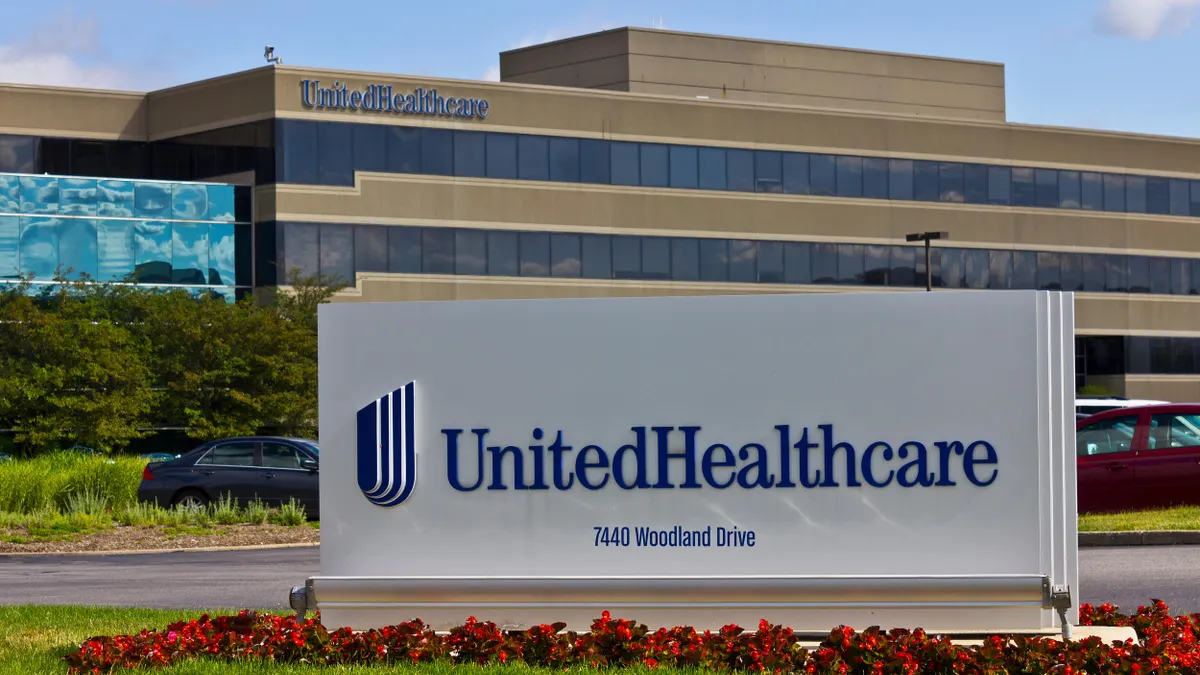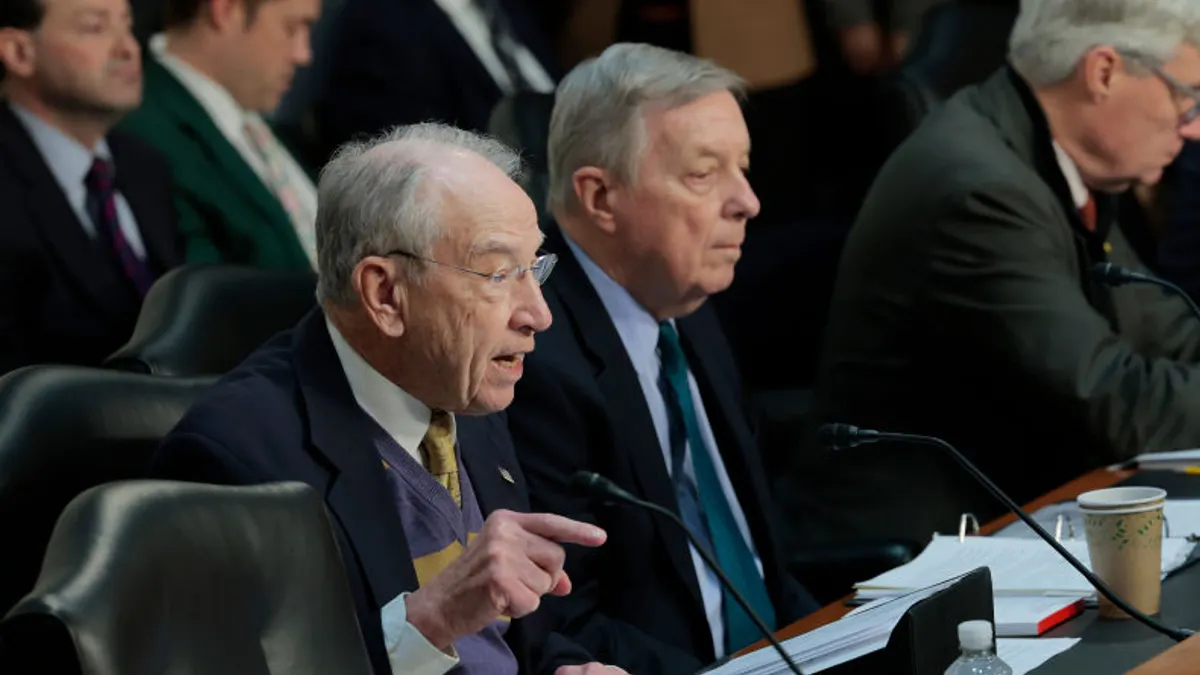Dive Brief:
- UnitedHealthcare pays providers in its sister company Optum 17% more than it pays non-Optum providers, according to a new study that provides fresh ammunition to critics of vertical integration and of UnitedHealth, the healthcare behemoth that owns both businesses.
- That percentage spikes to 61% in markets where UnitedHealthcare has at least 25% control, the study published in Health Affairs on Monday found.
- The results suggest that UnitedHealth is sidestepping rules meant to keep payers from unfairly profiting off of providing insurance, researchers said. UnitedHealth strongly refuted the findings and said that UnitedHealthcare pays Optum and other providers at similar rates.
Dive Insight:
Researchers, regulators and lawmakers are growing increasingly concerned about vertical integration, which has accelerated as more doctors are pushed out of private practice and into the arms of health insurers, hospitals and private equity companies.
Health insurers employ fewer doctors than hospitals. But payer control over physicians has been steadily increasing — and with it, worries that insurers are leveraging that ownership to avoid government requirements that they keep profits in-check.
In the new study, researchers with Brown University and the University of California Berkeley analyzed government price transparency data to look into these practices at UnitedHealth. It’s not the only vertically integrated healthcare company — CVS, Elevance and Humana all have owned provider assets, for example — but it’s certainly the biggest, with $400 billion in annual revenue.
Optum is one of the largest physician employers in the U.S., overseeing more than 90,000 owned or affiliated doctors along with hundreds of medical clinics. Meanwhile, UnitedHealthcare is the biggest private insurer in the nation.
The new research zeroed in on frequently performed and high-cost procedures to compare what UnitedHealthcare paid Optum providers in 2024 for its commercial members compared to what other large insurers — CVS’ Aetna, Cigna and Blue Cross Blue Shield plans, including Elevance — paid.
Overall, UnitedHealthcare paid both Optum and non-Optum providers more than those rival insurers — 62% more and 38% more, respectively. The difference between those figures means UnitedHealthcare’s higher payments to Optum practices relative to other payers came in at 17% last year, the study found.
The findings suggest that UnitedHealth may be gaming its medical loss ratio, an important metric measuring how much in premiums insurers pay out for patient care, study authors said.
Under the Affordable Care Act, insurers have to divvy out at least 80% of premiums on patient care for individual and small-group plans, and at least 85% for large-group plans. If payers don’t meet that threshold, they have to pay the difference back to their members.
In response, major insurers have created a shell game, experts say.
It works like this: By steering patients towards owned providers, an insurer can essentially pay itself for providing the service — enabling the company to keep a greater share of members’ premiums by translating them into revenue in another division. Then, that insurer can report those premiums were spent on patient care, driving its MLR into acceptable bounds even though those premiums remained in-house.
Interestingly, UnitedHealth’s payments to Optum doctors spiked to 61% higher than other doctors in markets where UnitedHealthcare controlled at least 25% of market share, the study found.
Researchers said that UnitedHealthcare has a stronger incentive to increase reimbursement for Optum doctors in those markets, as the MLR rule is more likely to constrain profits in markets with less competition.
“As UnitedHealth Group (via Optum) and other insurers acquire physician practices and grow their pharmacy benefit manager and specialty pharmacy businesses, particularly in markets with little insurance competition, it is important to monitor how intercompany transactions may mask monopoly profits because that would interfere with market signals for entry and hinder regulatory enforcement of the medical loss ratio,” researchers wrote.
Still, the study, which was funded by grants from Arnold Ventures and the Commonwealth Fund, had a number of limitations. It only analyzed a slice of prices, so variables that would have led to researchers finding higher or lower reimbursement may have been left out.
In addition, the study only included a small number of UnitedHealthcare-Optum observations compared to other categories. UnitedHealthcare payments to Optum provides represented less than 0.2% of the full sample size. Researchers acknowledged the results “might not be generalizable” to payment for other services as a result.
UnitedHealth pointed to those limitations in refuting the research. The company also argued that if UnitedHealthcare actually paid Optum 17% more than other providers, it wouldn’t be able to offer competitive and actuarially sound plans.
“UnitedHealthcare pays Optum Health consistent with other providers in the market, which is essential for staying competitive. The study, funded by groups with known biases, cherry-picks data and is flat-out wrong,” the company said in a statement to Healthcare Dive.
It’s not the only research finding a link between UnitedHealthcare and higher payments to Optum providers. Last November, Stat published an investigation finding that UnitedHealthcare paid 13 of 16 analyzed Optum practices more for common services than it paid other in-network providers in the same area.
UnitedHealth is currently facing criminal and civil investigations by the Department of Justice over concerns that the company is profiteering over its control over the healthcare industry, including through the relationship between UnitedHealthcare and Optum.














